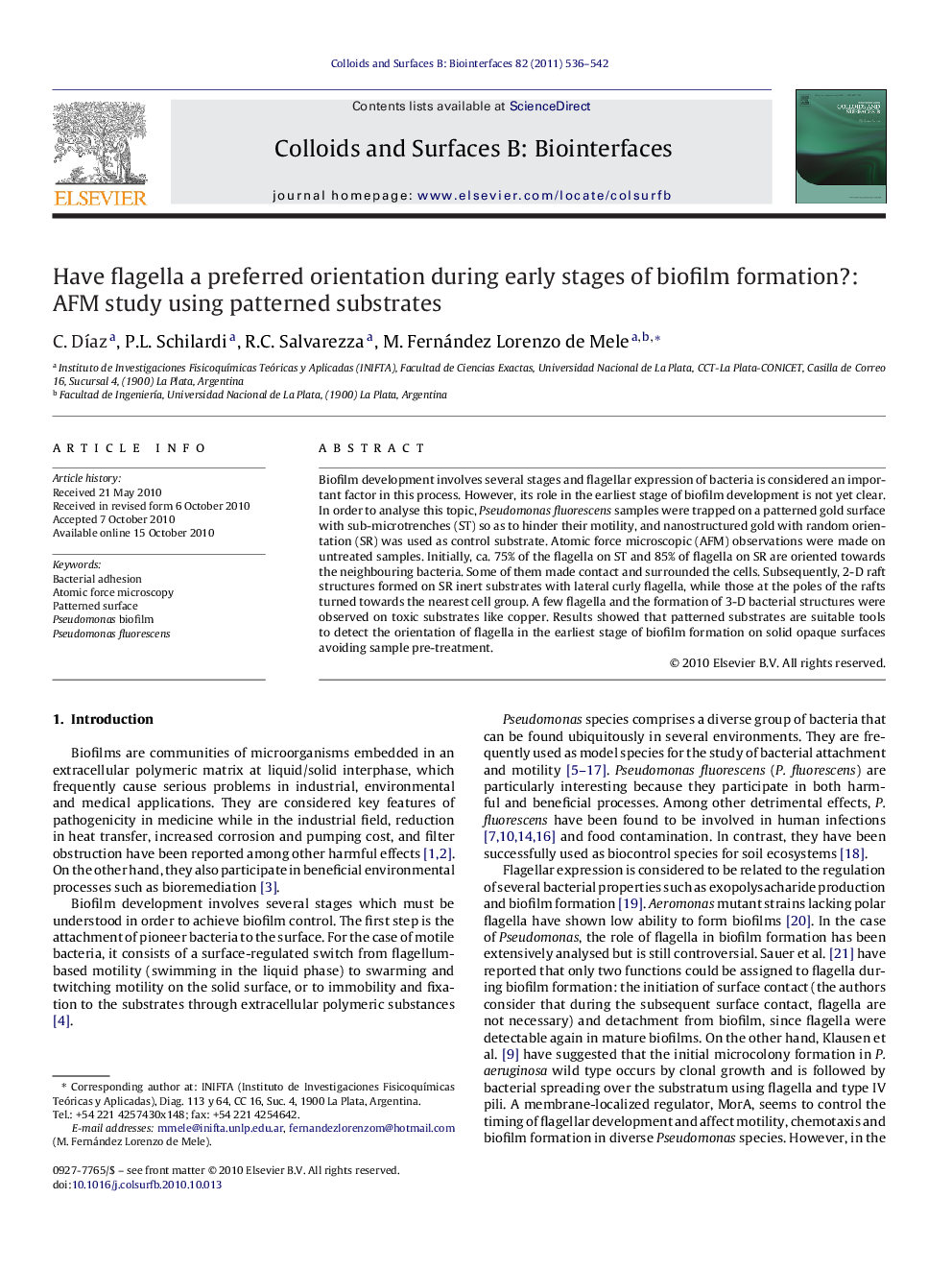| Article ID | Journal | Published Year | Pages | File Type |
|---|---|---|---|---|
| 601349 | Colloids and Surfaces B: Biointerfaces | 2011 | 7 Pages |
Biofilm development involves several stages and flagellar expression of bacteria is considered an important factor in this process. However, its role in the earliest stage of biofilm development is not yet clear. In order to analyse this topic, Pseudomonas fluorescens samples were trapped on a patterned gold surface with sub-microtrenches (ST) so as to hinder their motility, and nanostructured gold with random orientation (SR) was used as control substrate. Atomic force microscopic (AFM) observations were made on untreated samples. Initially, ca. 75% of the flagella on ST and 85% of flagella on SR are oriented towards the neighbouring bacteria. Some of them made contact and surrounded the cells. Subsequently, 2-D raft structures formed on SR inert substrates with lateral curly flagella, while those at the poles of the rafts turned towards the nearest cell group. A few flagella and the formation of 3-D bacterial structures were observed on toxic substrates like copper. Results showed that patterned substrates are suitable tools to detect the orientation of flagella in the earliest stage of biofilm formation on solid opaque surfaces avoiding sample pre-treatment.
Graphical abstractFigure optionsDownload full-size imageDownload as PowerPoint slideResearch highlightsPatterned structures are useful to trap bacteria and image flagella by AFM. AFM images show that flagella are oriented towards the neighbouring bacteria. Curly flagella were detected around bacterial assemblages on not toxic smooth surfaces. Flagella also connect groups of bacteria.
